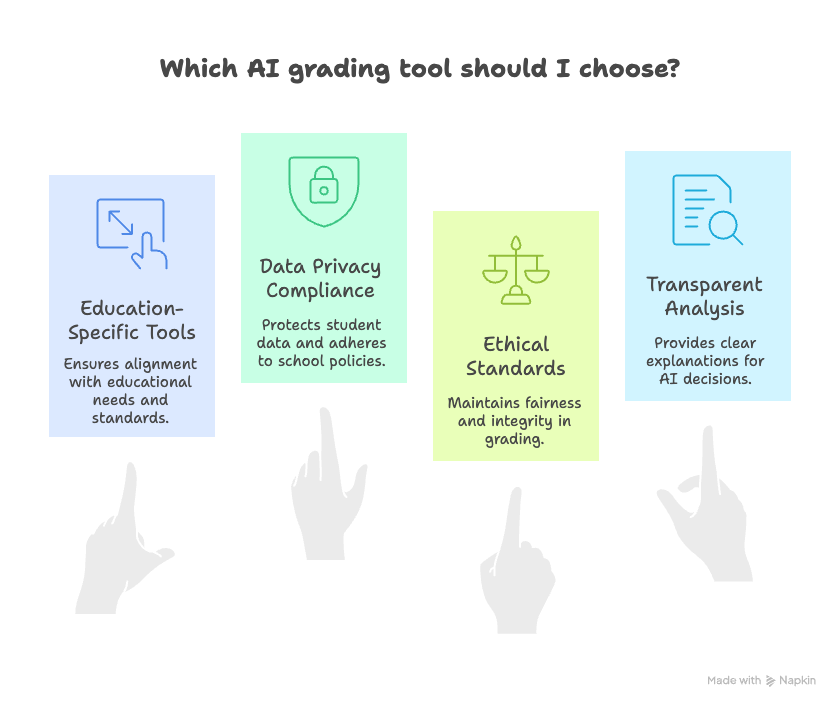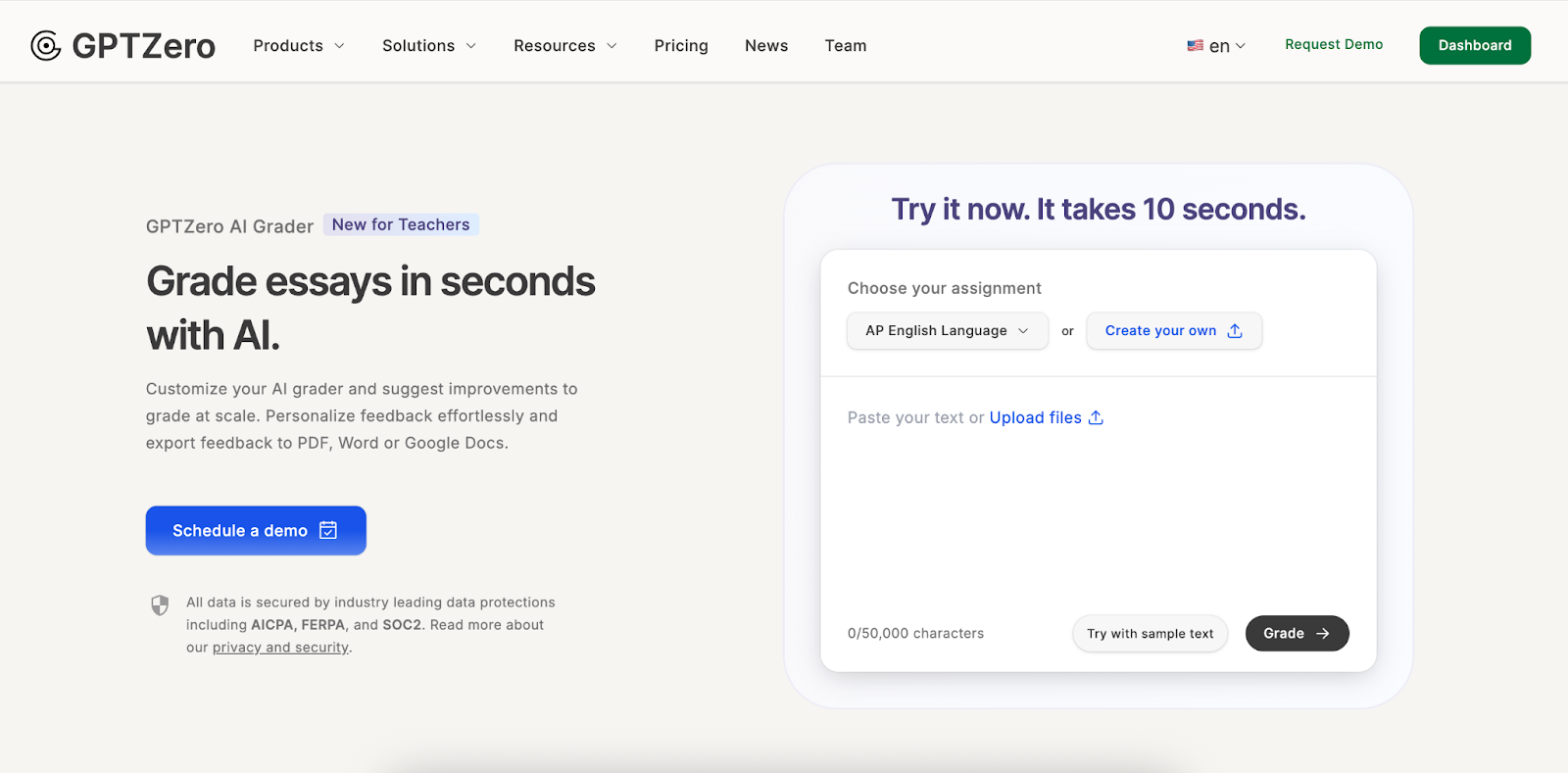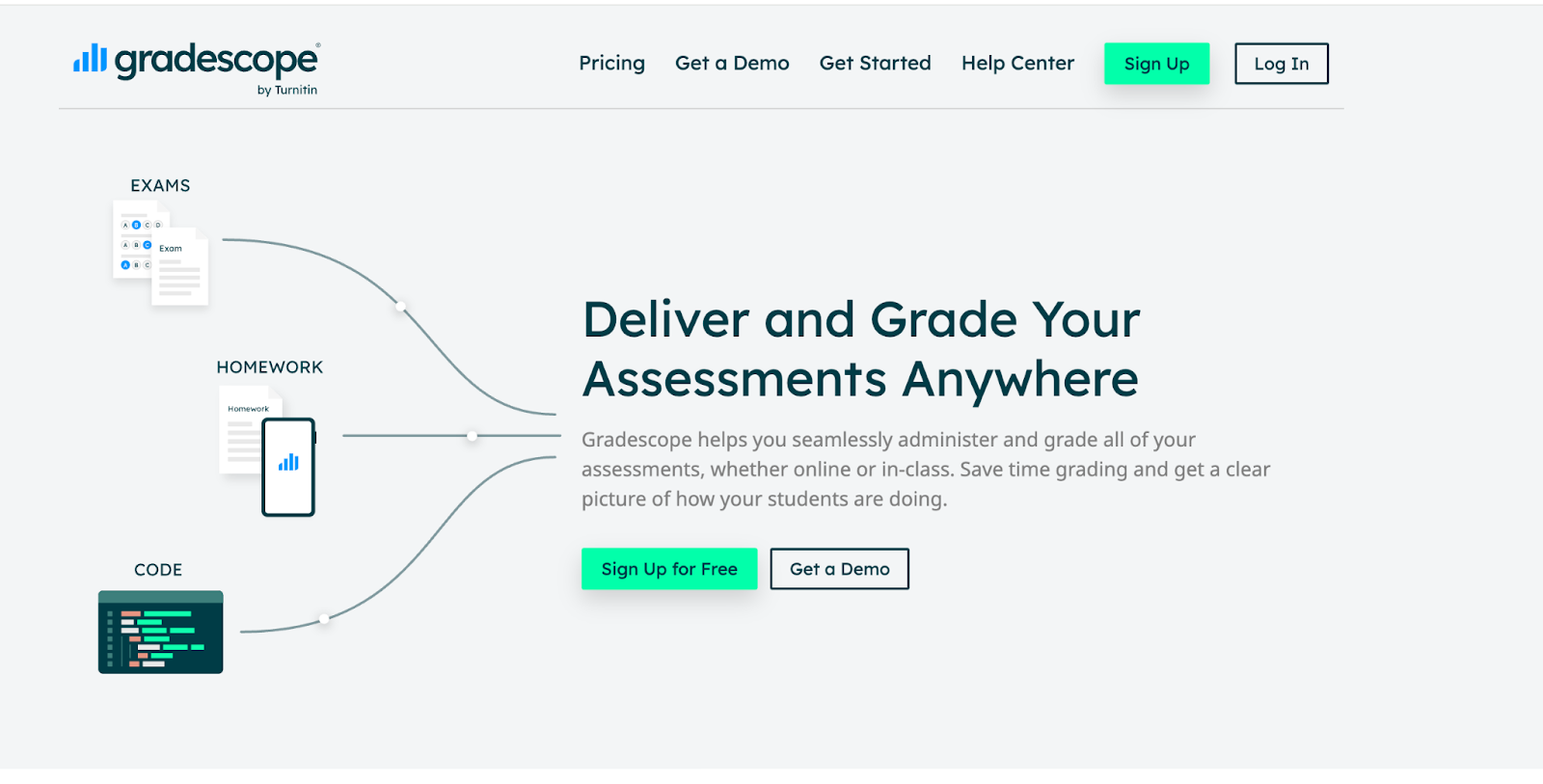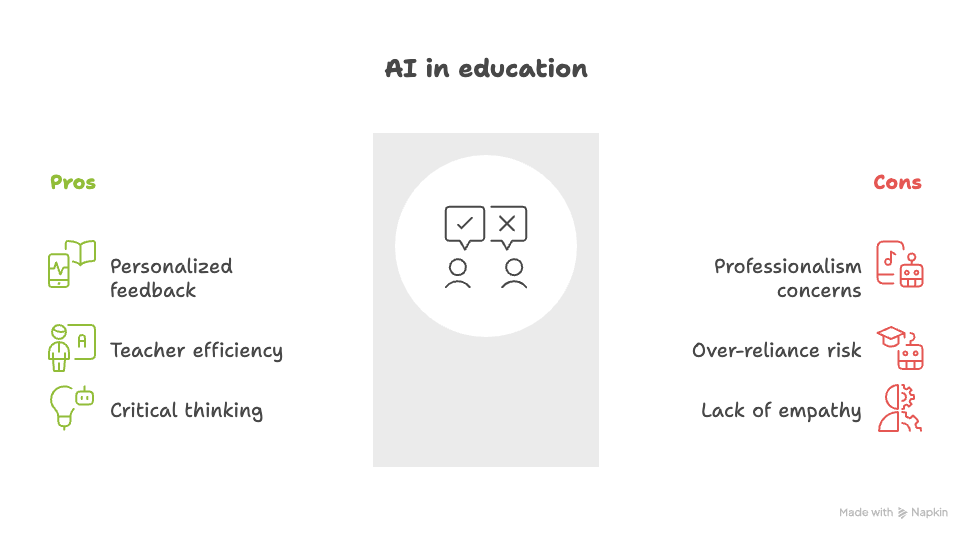How to Use AI Graders: A Teacher’s Guide
A step-by-step guide for teachers to adopt AI graders, design rubrics, audit results, and maintain fairness in grading.

It's 10 p.m. and you're still marking a never-ending stack of papers, wanting to offer each student useful comments, but without much time. Some teachers are worried about the impending implications of AI, but the reality is that its usage in classrooms is growing around the world. In Singapore and the UAE, for example, 75% of teachers already use AI.
Used thoughtfully and ethically, it’s unquestionable that AI grading systems can save you valuable hours per week by making the grading process more fair and consistent. This frees up more time for everything else on your list, including spending time with your pupils. In this article, we'll show you how to use AI to evaluate essays, step by step, which tools are worth using, and how to tackle the typical challenges.
What Is an AI Grader and How Does It Work?
An AI Grader is a digital assistant that analyzes student writing and helps teachers evaluate it. Importantly, it doesn't "decide" for you; instead, it compares and makes suggestions, leaving the final decision to you. The tools use natural language processing, a type of AI that helps computers ‘read’ and assess text, instead of simply scanning for keywords. When a student submits an essay, the AI looks at the grammar, coherence, accuracy and tone.
The system then compares the writing to a rubric or benchmark essays, using machine learning to detect patterns associated with different levels of quality. The result might be a suggested grade, or more often, a set of comments on areas for improvement, such as “strengthen your thesis statement” or “add more evidence to support this claim”.
Take a 10th-grade English class writing essays on A Midsummer Night’s Dream, where you upload a few anonymized examples to your AI grader, with your grading rubric. The tool looks at each essay’s content and argument, and within minutes, produces consistent feedback across the class, flagging where students could improve. This means that instead of spending hours assessing 30 essays all at once, you now (almost instantly) have a bank of initial comments for students.
How Can Teachers Use AI Graders, Step by Step
While getting started with using AI to grade papers can feel foreign at first, it’s a simple process to have it up and running in your classroom.
Choose a trusted AI grading tool.
Look for tools designed specifically for education, that align with school data privacy policies and ethical standards. GPTZero, for instance, was built for teachers and offers transparent sentence-level analysis so you can see why the AI makes each decision.
Set your rubric or learning goals
Upload your grading criteria or standards, which the AI will use as its guide, making sure that all feedback relates back to your objectives. The strength of these rubrics reduce bias and make AI suggestions infinitely more reliable.
Run the AI grading process
You can upload essays or just paste the text straight in. Within minutes, the AI drafts feedback, pointing out what’s already working, and what could be stronger.
Look over the results and make any necessary changes.
This stage is critical because it’s the fine line between using AI to support vs. replace your professional judgment. Go over the AI's criticism and add your own comments, making sure the AI insights reflect what you would actually suggest.
Give students feedback
As part of a broader and ongoing learning conversation, give the feedback to students and encourage them to think about it and ask questions.
Reflect and adapt
As time goes on, you’ll learn when the AI’s insights are most useful, and when they’re missing the mark. Many teachers use it for formative stages such as drafts rather than final grading.

Top AI Grading Tools for Teachers
While there are a plethora of options available, we’ve scanned what’s out there to find the following to picks:
1. GPTZero AI Grader (For transparent feedback)

This is part of GPTZero’s growing suite of classroom tools and helps teachers mark essays in seconds, while keeping the human touch. You can upload your own rubrics or use built-in templates to guide grading, then review and edit every AI-suggested comment before sharing it with students: ultimately, it’s designed to save time while keeping you firmly in control.
Integrated with tools teachers already use (like Canvas, Google Classroom, and Moodle), the AI Grader makes feedback faster and more consistent, plus, it’s built on GPTZero’s privacy-first foundation, meaning all data is protected to the highest standards (FERPA, SOC 2, GDPR). Teachers using the AI Grader report are saving around eight hours a week, with accuracy levels above 90%.
2. Gradescope (For large-scale marking)

Gradescope, developed by Turnitin, helps teachers and universities grade faster and more consistently, whether assignments are on paper or online. It supports a broad range of assignment types (e.g. maths problem sets to computer science projects) with flexible rubrics that make it easy to apply the same standards across hundreds of submissions.
Teachers can grade by question and reuse feedback, and also group similar answers to speed up marking. Grades can be returned instantly, with built-in analytics that show which questions students struggled with most.
3. CoGrader (For Google Classroom users)
CoGrader is an AI essay grader that helps teachers give detailed and standards-aligned feedback in a fraction of the time. It integrates directly with teacher platforms so you can import assignments, put in your own rubrics, and return feedback in mere minutes.
Teachers can edit and approve every comment before it’s sent. CoGrader is particularly popular for state test prep and formative writing feedback, offering rubric-based scoring and insight reports that make lesson planning easier.
4. Brisk (For quick formative feedback)
Brisk is a free Chrome extension that helps teachers give high-quality writing feedback in seconds, directly inside Google Docs. It’s designed for speed and simplicity: you just open a student essay, click the Brisk icon, and instantly generate feedback that you can review, edit, and post directly from your own Google account.
Teachers can choose from four feedback types (Glow & Grow, Rubric Criteria, Next Steps, or Targeted Feedback) which are all aligned to your rubrics or state standards and available in 20+ languages. The result is feedback that still sounds like you.
Common Challenges To Using AI Graders
1. Bias or Errors in AI Feedback
AI systems are only as good as the data they’re trained on and sometimes they miss nuance or misinterpret creativity. This is why it’s critical to review feedback before sharing, and to cross-check against your rubric. Most of all, let your instincts guide you: if something feels “off” then edit or delete it, as the AI should support (instead of overriding) your expertise.
2. Over-reliance on Automation
As one high school journalism teacher put it: “[AI has] been a lifesaver in getting kids from the first draft to the second draft, where they really need a human editor to polish their articles for publication.” This is a key tension for many educators: how to use AI as a support tool without undermining the human craft of teaching. While it can be tempting to lean a little too hard on AI tools, they work best for early-stage feedback. Make sure to pair every AI-generated comment with one human note that connects personally to the student.
3. Data Privacy Concerns
You might be asking: where does the data go? And that’s a fair concern to have. Make sure you choose tools that meet FERPA, GDPR, or equivalent standards, and read their data policies carefully. GPTZero, for example, doesn’t train on user data and prioritises classroom privacy.
4. Fear of Losing Credibility
Some educators worry that using AI as a classroom support tool undermines their professionalism. Yet as one teacher argued: “When you have 40 students in an enriched English class you absolutely cannot give adequate feedback to everyone always. AI comments do the heavy lifting, then you can finesse with some strong and pointed personal feedback.” AI feedback should be part of a broader learning dialogue, where students still get to hear your encouragement and empathy. You can even show them how you edited the AI’s comments and take it as an opportunity to model critical thinking about technology.

The Future of AI Grading in Education
We’re still in the early days of AI grading, but it’s obviously moving fast. In the coming years, we can expect to see tools that go beyond basic grammar checks to offer personalized feedback that adapts to each student’s writing style and progress.
Soon, we’ll see AI support multimodal assignments (projects that mix text, images, audio, or even code) giving teachers a fuller view of how students think and communicate. And rather than adding another app to juggle, these systems will integrate directly into the platforms teachers already use, from Google Classroom to Canvas.
Conclusion
Using AI to grade essays is a personal choice for every teacher and different institutions have different policies. However, those who have experimented with the tools report more time and energy to focus where it matters most. When used strategically, tools like GPTZero can lighten your workflow and help students receive fairer and more consistent feedback, while preserving your professional judgement.
FAQs
How can I use AI to grade essays?Start by selecting an education-specific AI tool, and then upload your rubric, import student essays, and let the AI generate a first round of feedback. Then review and make sure to personalize that feedback before sharing it with students, making 100% sure your final grade reflects your own professional judgment.
What’s the best way to implement standards-based grading with AI?Align your AI tool with clear learning standards or criteria before you start, and use it to generate formative feedback on each standard (e.g., “uses evidence effectively” or “writes with conviction”). Then, record progress over time to show growth rather than averages. Many AI platforms now allow tagging feedback to specific standards, making it easier to track improvement.
